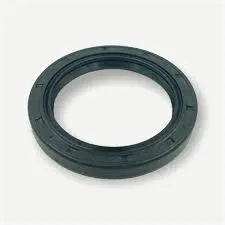7 月 . 02, 2024 15:49 Back to list
What Is Oil Seal?
What Is Oil Seal?
Common materials used in oil seals include nitrile rubber, fluorine rubber, silicone rubber, acrylic rubber, polyurethane, polytetrafluoroethylene, etc. When selecting the material of the oil seal, the compatibility of the material with the working medium, the adaptability to the working temperature range and the ability of the lip to follow the rotating shaft at high speed must be considered. When the oil seal is working, the temperature of its lip is higher than the working medium temperature by 20~50°C. Attention should be paid when selecting the oil seal material. The working range of the oil seal is related to the material used for the oil seal: the material is nitrile rubber (-40~120°C), Aggreko rubber (ACM) -30~180°C, fluorine rubber (FPM) -25~300°C.
Rotary Wheel Of Auto Parts
advantage:
1. The structure of the oil seal is simple and easy to manufacture. Simple oil seals can be molded once. Even the most complex oil seals are not complicated to manufacture. Metal frame oil seals can also be composed of metal and rubber required oil seals only by stamping, bonding, inlaying, molding and other processes.
2, oil seal lightweight, fewer supplies. Each type of oil seal is a combination of thin-walled metal parts and rubber parts, and its material consumption is very small so that each oil seal has a lightweight.
3, the oil seal installation position is small, axial small size, easy processing, and make the machine compact.
4. The sealing function of the oil seal is good and the service life is long. It has the certain adaptability to the vibration of the machine and eccentricity of the main shaft.
5, the oil seal is easy to dismantle and inspection is convenient.
6, the seal is cheap.
